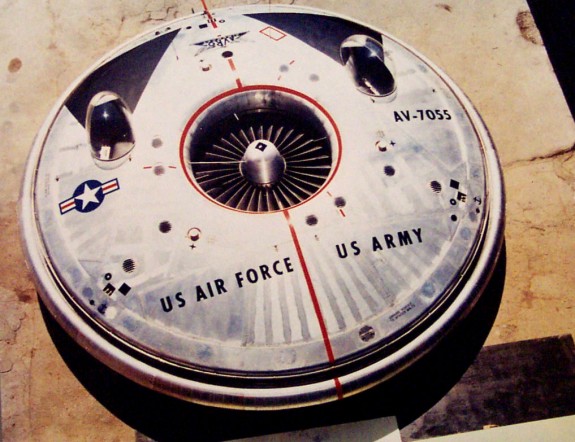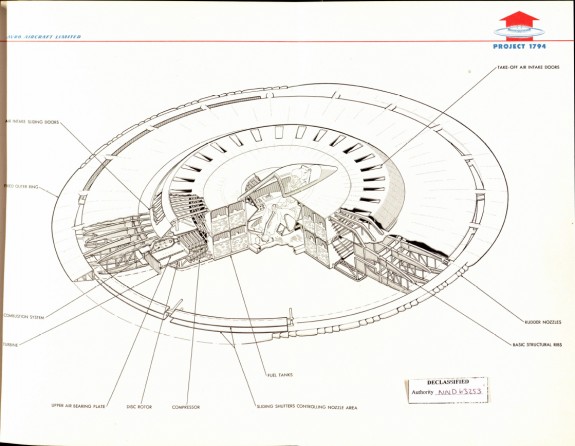The U.S. Air Force’s Plan To Build a Flying Saucer
Newly-released schematics show the plans for a failed flying saucer

The Avro Canada Avrocar, circa 1961. Photo: National Aviation Museum, Saskatchewan Council for Archives and Archivists
In the early 1950s, the United States Air Force started working with an upstart Canadian airplane manufacturer who they hoped could build them a real flying saucer.
Formed in the aftermath of World War II, Avro Aircraft Limited was to be Canada’s premier aeronautics designer and manufacturer. The company was most strongly associated with the Avro CF-105 Arrow, a delta-wing interceptor that was mothballed in 1959, but it was also working on an aircraft for the American government that looked unlike any plane in the air.
Dubbed “Project 1794” by the United States Air force, the Avrocar “was supposed to reach a top speed of “between Mach 3 and Mach 4, a ceiling of over 100,000 ft. and a maximum range with allowances of about 1,000 nautical miles,” says Wired‘s Benjamin Packett. Arrow Digital Archives, a project of Arrow Recovery Canada, says:
With its vertical take-off and landing capabilities, obviated the need for conventional runways and could theoretically be deployed almost anywhere. As a completely circular craft, it would also have embodied inherent stealth characteristics against detection by radar.
In a September blog post, the United States National Archives recently released schematic drawings of the nearly-flying saucer. The new drawings join other existing schemata, including a tear-down diagram.

Schematic drawings of the Avro Avrocar. Photo: National Archives
With the schematics, the Archives also released a project summary from Avro, dated to June 1, 1956, that says:
It is concluded that the stabilization and control of the aircraft in the manner proposed – the propulsive jets are used to control the aircraft – is feasible and the aircraft can be designed to have satisfactory handling through the whole flight range from ground cushion take-off to supersonic flight at very high altitude.
Though, they add, “dditional tests to completely substantiate this performance are shown to be required.” Additional tests did come, as did modifications to the aircraft. Eventually, though, the U.S. Air Force and Army pulled funding to Avro, and the program was shuttered for good. The prototype Avrocar ended up in the hands of the Smithsonian Air and Space Museum in 1975.
More from Smithsonian.com:
A Century of Flight – Taking Wing
/https://tf-cmsv2-smithsonianmag-media.s3.amazonaws.com/accounts/headshot/smartnews-colin-schultz-240.jpg)
/https://tf-cmsv2-smithsonianmag-media.s3.amazonaws.com/accounts/headshot/smartnews-colin-schultz-240.jpg)